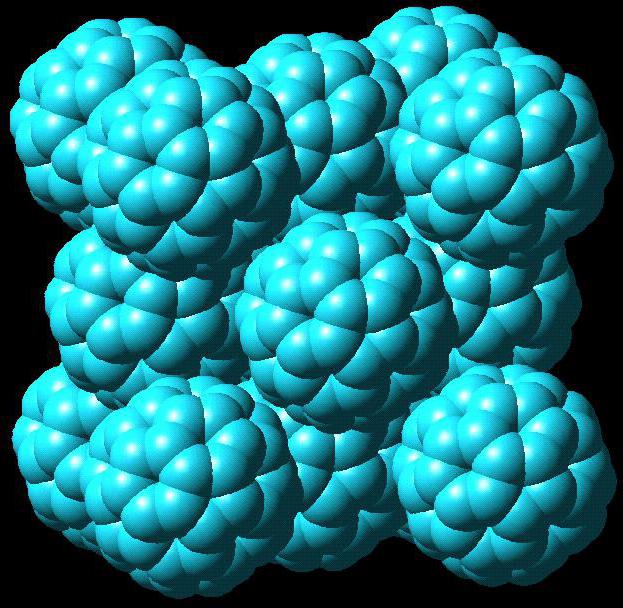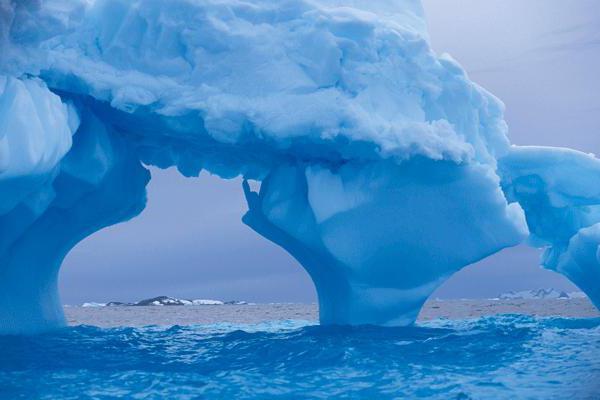This article talks about crystallization and melting. The different aggregate states of water explain how much heat is required for freezing and thawing and why these quantities are different. The difference between poly- and single crystals, as well as the difficulty of manufacturing the latter are shown.
Transition to another state of aggregation
An ordinary person rarely thinks about this, but life at the level at which it exists now would not have been possible without science. Which one? The question is not simple, because many processes occur at the junction of several disciplines. Phenomena for which it is difficult to precisely determine the field of science are crystallization and melting. It would seem, well, what’s complicated here: there was water - it became ice, there was a metal ball - it became a pool of liquid metal. However, there are no exact mechanisms for the transition from one state of aggregation to another. Physicists go deeper into the jungle, but it is still not possible to accurately predict at what point the melting and crystallization of bodies will begin.
What do we know
Humanity does know something. The melting and crystallization temperatures are readily determined empirically. But here everything is not so simple. Everyone knows that water melts and freezes at zero degrees Celsius. However, water is usually not just a theoretical construct, but a specific volume. Do not forget that the process of melting and crystallization is not instantaneous. The ice cube begins to melt a little earlier than it reaches exactly zero degrees, the water in the glass is covered with the first ice crystals at a temperature that slightly exceeds this mark on the scale.
Heat generation and absorption during transition to another state of aggregation

Crystallization and melting of solids are accompanied by certain thermal effects. In a liquid state, molecules (or sometimes atoms) are not very tightly connected. It is because of this that they have the property of "fluidity." When the body begins to lose heat, atoms and molecules begin to unite in the structure most convenient for them. Thus crystallization occurs. Often it depends on external conditions; graphite, diamond or fullerene will be obtained from the same carbon. So, not only temperature, but also pressure affects how crystallization and melting will proceed. However, in order to break the bonds of a rigid crystalline structure, it takes a little more energy, and hence the amount of heat, than to create them. Thus, the substance will freeze faster than melt, under the same process conditions. This phenomenon is called latent heat and reflects the difference described above. Recall that latent heat is not related to heat as such and reflects the amount of heat required for crystallization and melting to occur.
Volume change upon transition to another state of aggregation
As already mentioned, the number and quality of bonds in the liquid and solid state are different. The liquid state requires a lot of energy, therefore, atoms move faster, constantly jumping from one place to another and creating temporary bonds. Since the amplitude of the oscillations of the particles is greater, the liquid also occupies a larger volume. Whereas in a solid body the bonds are rigid, each atom oscillates around one equilibrium position, it is unable to leave its position. Such a structure takes up less space. So melting and crystallization of substances are accompanied by a change in volume.
Features of crystallization and melting of water
Such a liquid, widespread and important for our planet, as water, perhaps not by chance plays a large role in the life of almost all living things. The above describes the difference between the amount of heat that is required for crystallization and melting to occur, as well as a change in volume when the state of aggregation changes. Some exceptions to both rules are water. Hydrogen of various molecules, even in a liquid state, combines for a short time, forming a weak, but non-zero hydrogen bond. This explains the incredibly high heat capacity of this universal fluid. It is worth noting that these bonds do not interfere with the fluidity of water. But their role in freezing (in other words, crystallization) remains unclear to the end. However, it should be recognized: ice of the same mass takes up more volume than liquid water. This fact causes a lot of damage to utility networks and causes a lot of problems to the people serving them.

More than once or twice in the news flash such messages. In winter, an accident occurred at the boiler room of some remote settlement. Due to snowstorms, ice or severe frosts, they did not manage to deliver fuel. The water supplied to the radiators and taps has stopped heating. If it is not drained in time, leaving the system at least partially empty, and preferably dry at all, it begins to acquire an ambient temperature. Most often, as luck would have it, severe frosts are at this time. And the ice breaks the pipes, leaving people with no chance of a comfortable life in the coming months. Then, of course, the accident is eliminated, the valiant employees of the Ministry of Emergency Situations, breaking through the blizzard, throw several tons of coveted coal there by helicopter, and the unfortunate plumbers change the pipes round the clock.
Snow and snowflakes
Imagining ice, we most often think of cold cubes in a glass of juice or the vast expanses of frozen Antarctica. Snow is perceived by people as a special phenomenon, which seems to be not related to water. But in fact, this is the same ice, only frozen in a certain order, which determines the shape. They say that two identical snowflakes do not exist in the whole world. A scientist from the United States took up the matter seriously and determined the conditions for obtaining these hexagonal beauties of the desired shape. His laboratory can even provide a blizzard of snowflakes paid for by the customer. Incidentally, hail, like snow, is the result of a very interesting crystallization process - from steam, not from water. The reverse transformation of a solid immediately into a gaseous aggregate is called sublimation.
Single crystals and polycrystals
Everyone saw ice patterns on glass in a bus in winter. They are formed because the temperature inside the transport is above zero Celsius. In addition, many people exhaling together with air from light vapors provide increased humidity. But glass (most often thin single) has an ambient temperature, that is, negative. Water vapor, touching its surface, very quickly loses heat and becomes solid. One crystal sticks to another, each of the following forms slightly different from the previous one, and beautiful asymmetric patterns quickly grow. This is an example of polycrystals. "Poly" - from the Latin "a lot." In this case, a certain amount of microparticles is combined into a single whole. Any metal product is also most often a polycrystal. But the perfect form of the natural prism of quartz is a single crystal. In its structure, no one will find flaws and gaps, while in the polycrystalline volumes the directions of the parts are randomly arranged and do not agree with each other in any way.
Smartphone and binoculars
But in modern technology, absolutely pure single crystals are often required. For example, almost any smartphone contains a silicon memory element in its bowels. Not a single atom in this entire volume should be shifted relative to the ideal arrangement. Everyone should take their place. Otherwise, instead of a photograph, you will get sounds at the output, and most likely, unpleasant ones.
In binoculars, night vision devices, too, sufficiently voluminous single crystals are needed that convert infrared radiation to visible. There are several ways to grow them, but each requires special care and accurate calculations. How monocrystals are obtained, scientists understand from phase diagrams of a state, that is, they look at the graph of melting and crystallization of a substance. It is difficult to compose such a picture, therefore, material scientists especially appreciate scientists who decided to find out all the details of such a schedule.